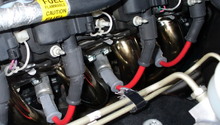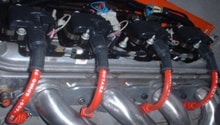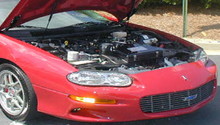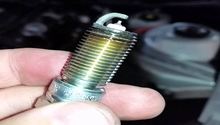Camaro and Firebird: How to Replace Your Spark Plugs
It's important to change your spark plugs every 30 to 40 thousand miles. This article explains how to change spark plugs on the LS1 and LT1 engines.
This article applies to the Chevrolet Camaro and Pontiac Firebird (1990-2002).
Just like changing the oil, swapping out old spark plugs is an important part of maintaining your car. Spark plugs are even more important because they affect how well your engine runs. Leave an old spark plug in for too long and it can lead to engine misfires. To be safe, you should change them every 30 to 40 thousand miles, or 60 to 75 thousand if you use platinum or iridium plugs. For the most part, changing spark plugs is easy, except on the LS1 and LT1 engines the rear passenger plug is really difficult to reach. Don't worry, there a number of tricks you can use to get to it. Read the instructions below to learn more.

Materials Needed
- Replacement spark plugs
- Ratchet with 3/8" spark plug socket, extensions, and swivel extensions
- Needle nose pliers
- Anti-seize
- Dielectric grease
Step 1 – Remove the spark plug
Start by disconnecting the negative (black) terminal on the battery. Find the spark plug and pull off the spark plug boot. For some spark plugs you'll need a tool to reach down and remove it. Attach your spark plug socket to your ratchet and use it to loosen the spark plug from the engine. If the spark plugs have never been changed, then they may be difficult to loosen. If this happens, use a pipe with your ratchet for leverage to crack it loose and then use the ratchet like normal. When the spark plug is loose, pull it from the engine and set it aside.
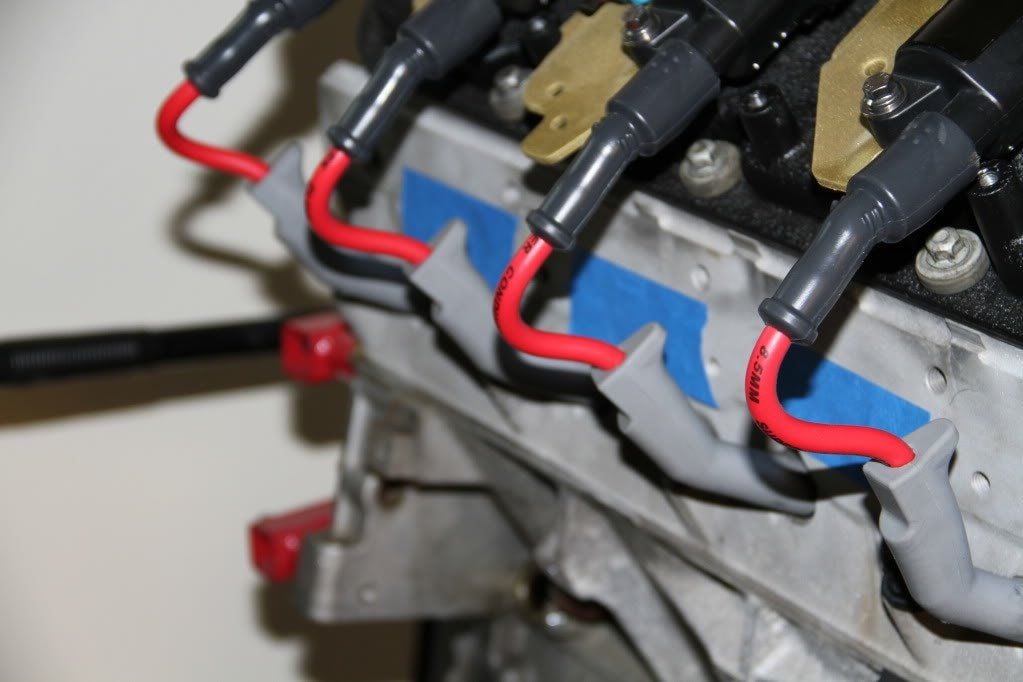
Figure 1. Spark plug wires. 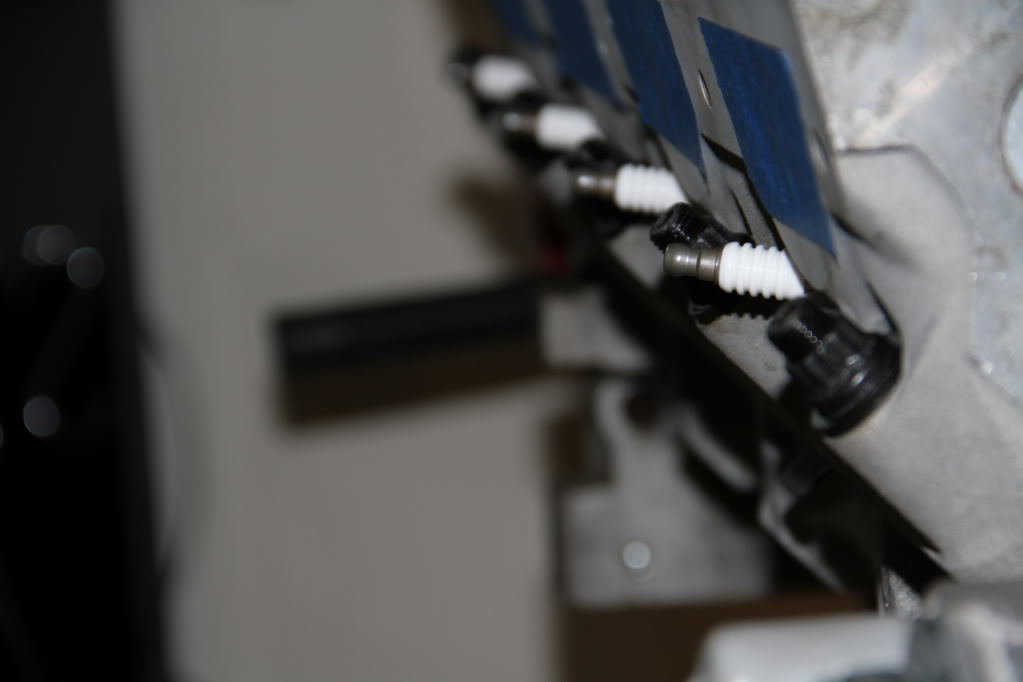
Figure 2. Spark plugs.
Pro Tip
If you're having a hard time reaching the bolts, try removing the large air pipe and the ignition coil pack brackets. These will give you better access to the spark plugs. To reach the rear-most passenger side spark plug, it may be necessary to lay on top of the battery. Place a towel over the battery so you don't hurt yourself or damage the battery.
Step 2 – Install the new spark plug
Check the gap of your new spark plugs and make sure it's at the size recommended for your car. Most spark plugs are gaped at the factory, but you should still check just in case. If it's not the right size, lightly tap the tip of the spark plug with a small hammer until it reaches the correct gap. Be very careful though, because spark plugs can be somewhat fragile.
After checking the gap, apply a small dab of anti-seize to the threads on the spark plug. This will make it easier to remove later on. Then thread it into the engine. It's best to tighten by hand so it goes in straight, but that won't be possible some times, so do the best you can and make sure it's good and tight. You don't want the spark plug to be loose.
Apply a dab of dielectric grease to the inside of the spark plug boot, then reattach it to the spark plug. This will improve conductivity from the wire to the plug. Then repeat these two steps for the other spark plugs.

Featured Video: LS1 Tune Up
Related Discussions
- Changing Spark Plugs - LS1Tech.com
- Spark Plug Change on V6 - LS1Tech.com
- Spark Plug Change - LS1Tech.com
- How Long Before Spark Plug Change? - LS1Tech.com
- What's the Easiest Way to Change Plugs on LS1? - LS1Tech.com

